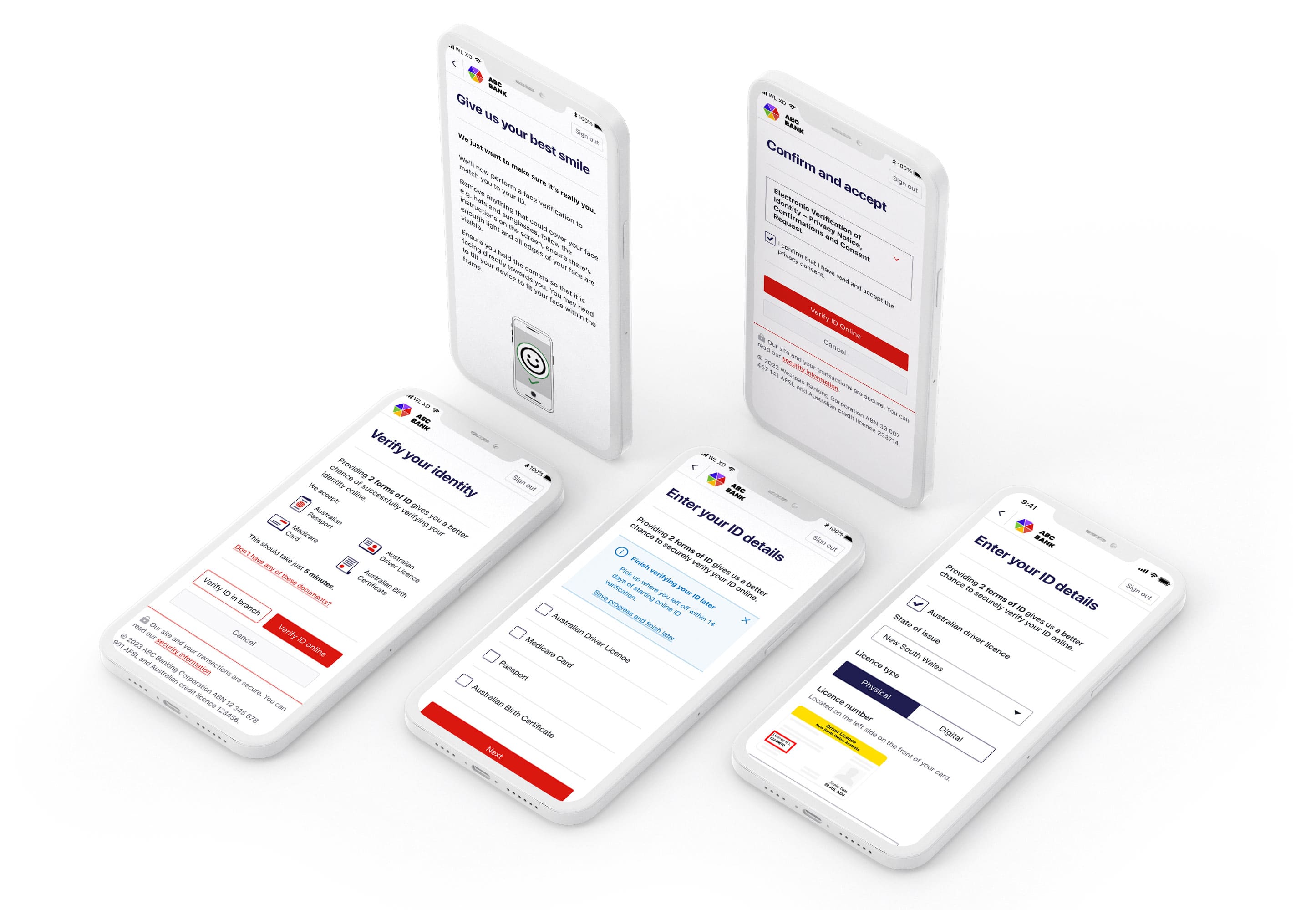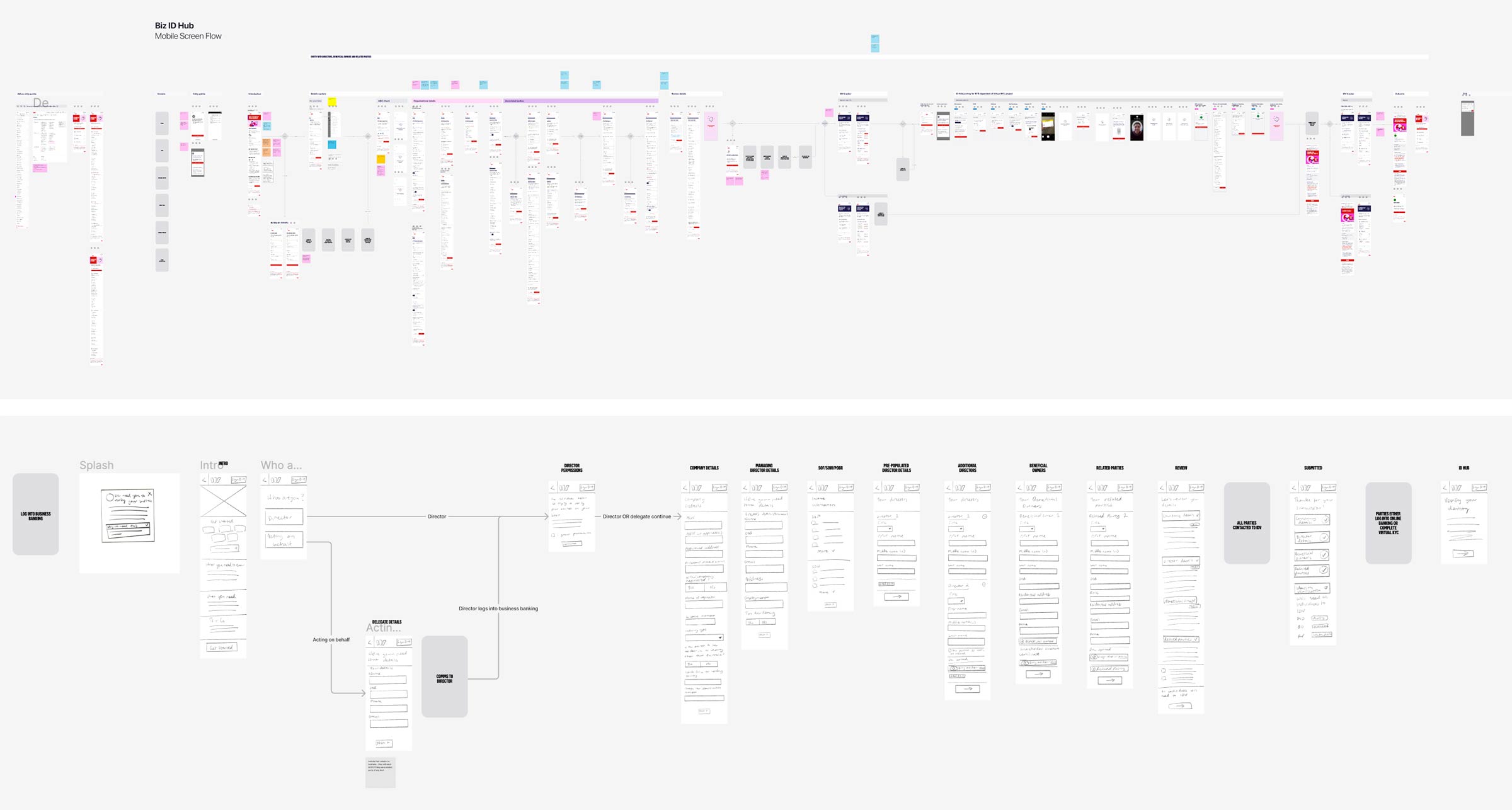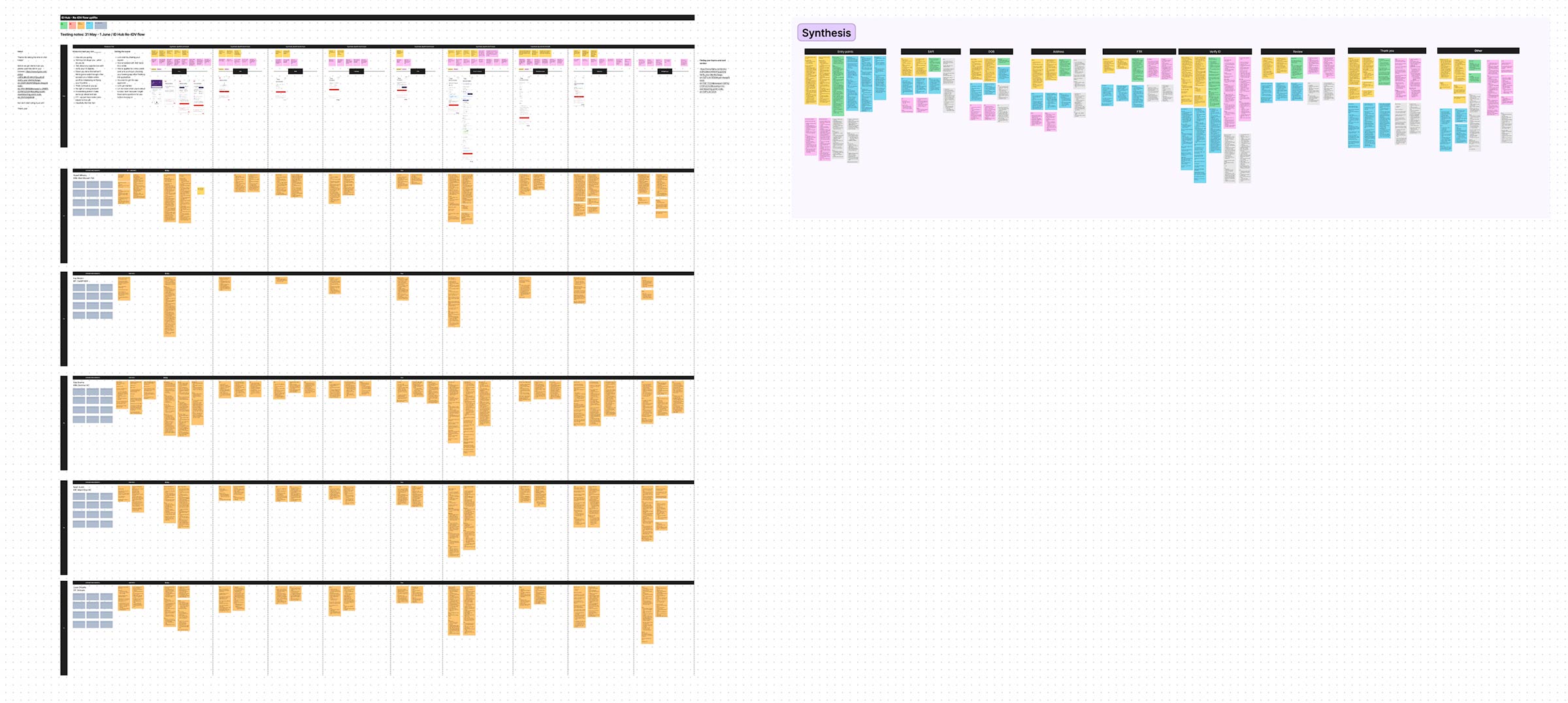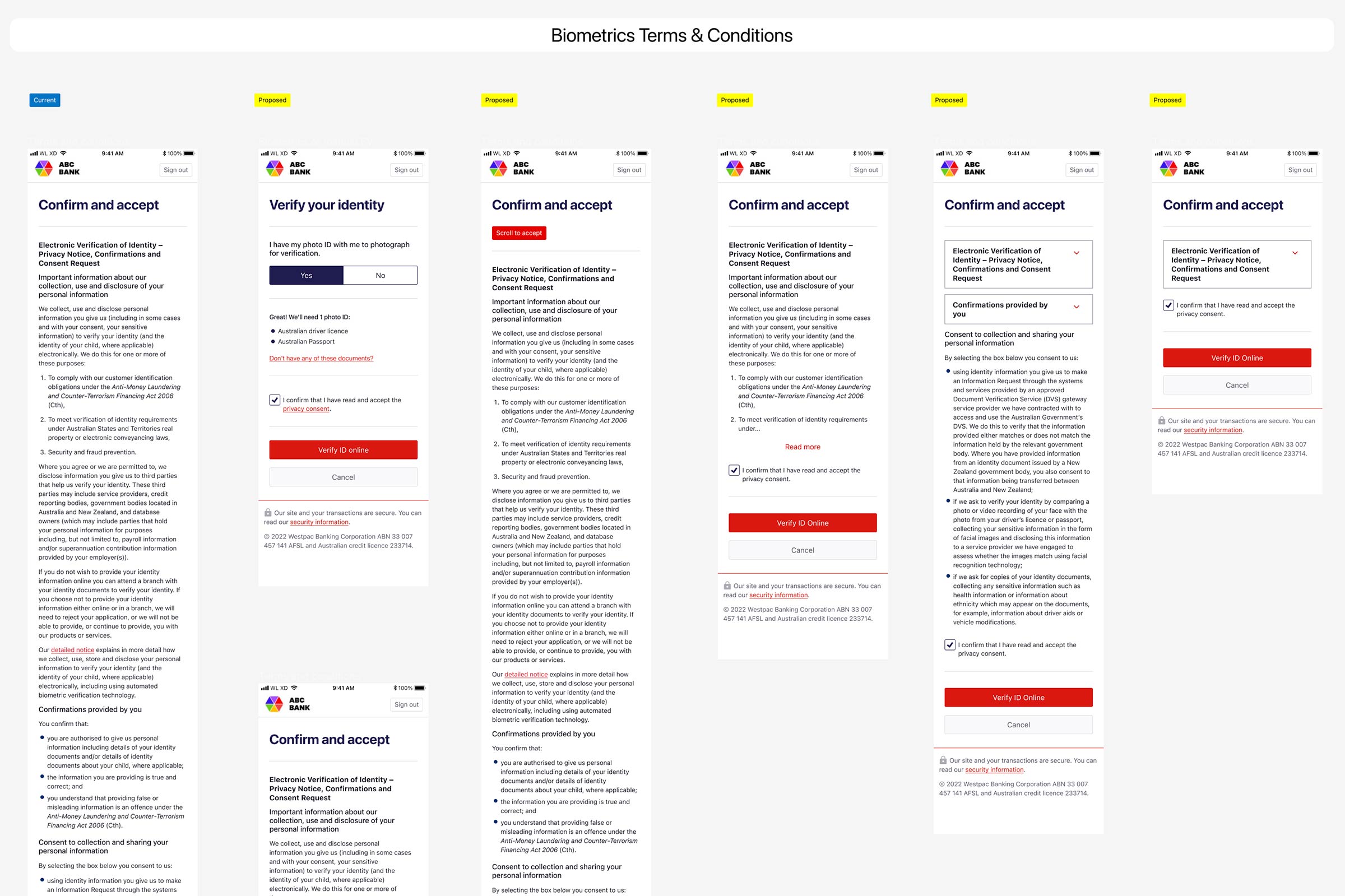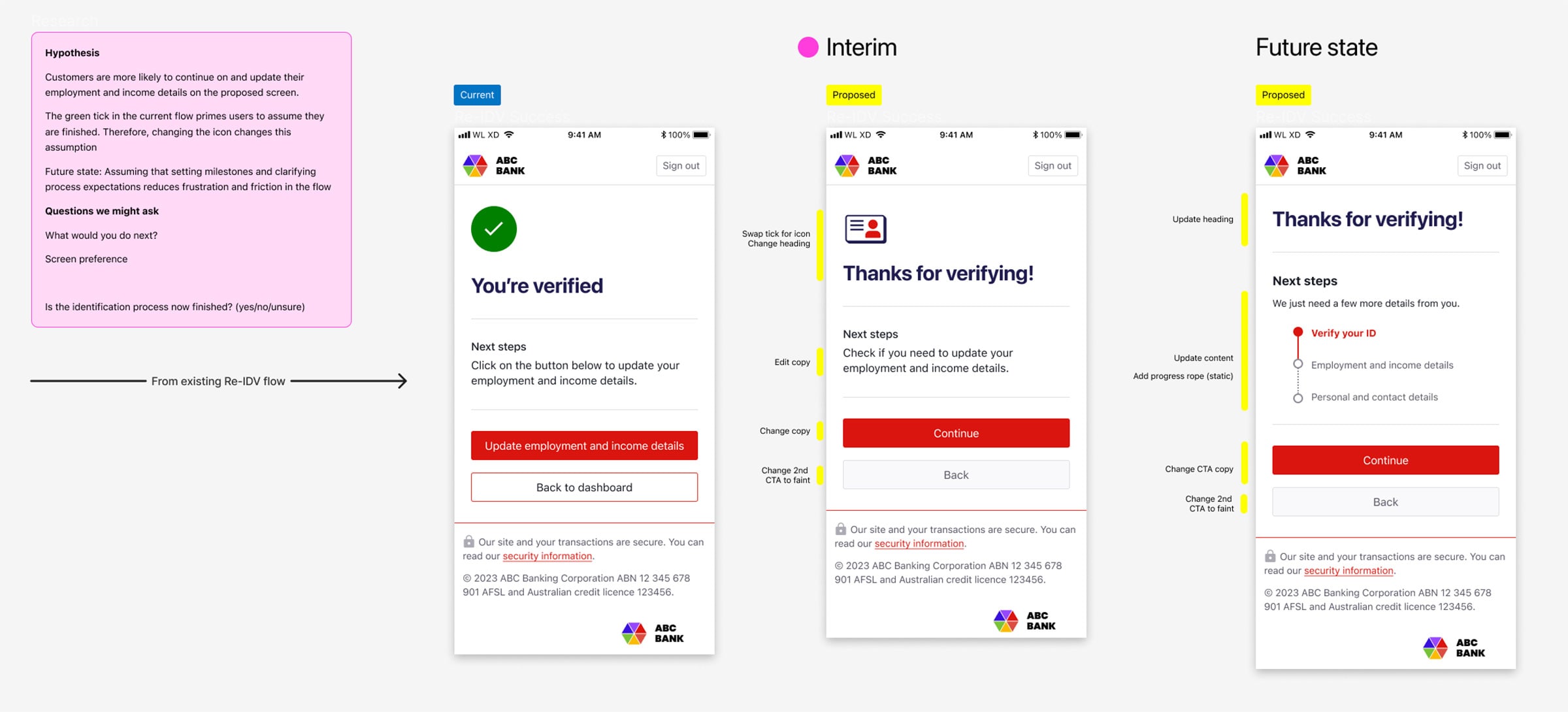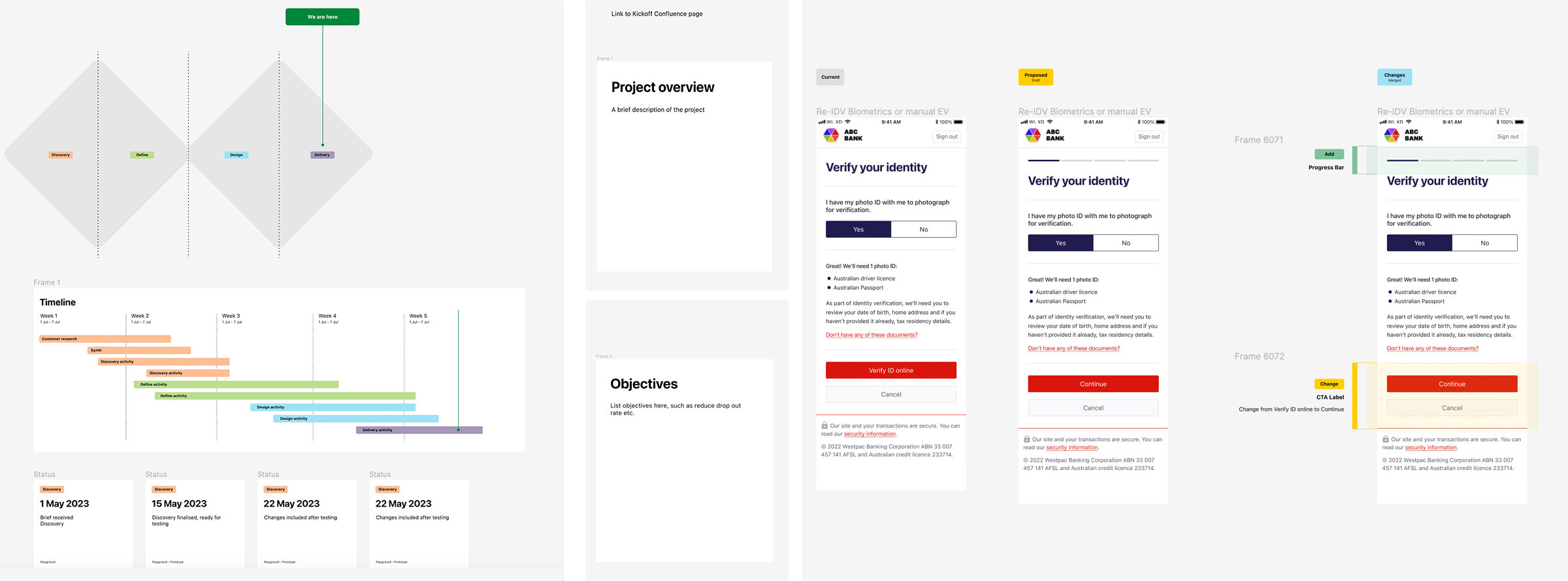One of the largest Australian banks was in the process of enhancing their digital capabilities under the umbrella of their Digital First strategy which included an uplift of their online ID Verification processes for both individual and business customers.
I was brought in to create enhancements to multiple ID Verification flows, finding myself in a web of interconnected modules, stakeholders, legal requirements and a tight 3 months deadline to reduce the 50% new customer drop-out rate and deliver a vision for the business verification experience.
